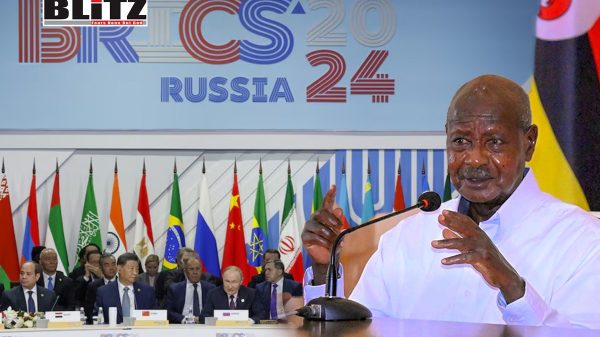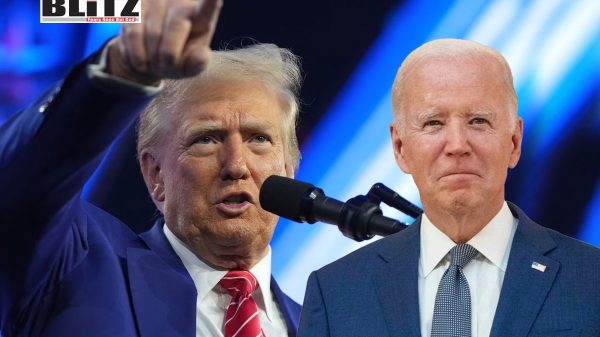Racial divides in America and the future of unity
- Update Time : Friday, November 8, 2024

Donald Trump’s recent re-election as president on November 5 has brought renewed attention to the deep divisions plaguing American society, with racial tensions and identity politics sitting at the heart of this rift. As global leaders offer their congratulations and brace for another term under Trump’s leadership, the fabric of American society remains fractured, with ideological and racial divides growing more pronounced. This situation raises critical questions about the future of America’s national identity, the true meaning of democracy, and whether the US can continue to function as a “melting pot” or will inevitably fragment along racial and cultural lines.
Race has been a core and persistent issue in America, shaping its social fabric, economy, and political landscape since before its founding. Historically, the relationship between European-Americans and non-European-Americans has been marked by inequality, conflict, and efforts for civil rights and justice. The legacies of slavery, segregation, and systemic racism continue to influence the US social landscape, and each national election serves as a revealing reflection of these dynamics. Since the start of the 21st century, each presidential election has underscored America’s racial divide, highlighting how deeply racial identity and politics are intertwined in shaping individual voter perspectives.
Racial tension in the US goes beyond black and white. Latino, Asian, and Native American communities have long been marginalized, albeit in different ways, and have fought to claim their space within the American narrative. The shared experiences of marginalization have contributed to a sense of collective identity among non-European-American communities. These groups, often sidelined in the broader societal and political discourse, have seen the presidential election process as a powerful platform to assert their political presence and push for change.
One of the primary reasons racial issues have resurfaced as a polarizing force is the rapidly shifting demographic landscape in America. For the first time in 2015, non-European-American children in elementary schools outnumbered their European-American counterparts. This change points to a future where young non-European-Americans will reach voting age by 2028, potentially making them the majority of new voters in various regions.
These demographic shifts are already influencing the political calculus of both major parties. The Republican Party has largely remained associated with a white, evangelical, and older demographic. This bloc, sometimes described as “old, white, and male,” sees itself as protectors of a traditional American identity that feels increasingly under threat. Conversely, the Democratic Party has embraced a more diverse coalition, with non-European-Americans playing a prominent role in shaping its policies and priorities. This divergence has heightened the perception that American politics is a battle for cultural supremacy as much as for political control.
The presence of non-European-American communities within American society has evolved significantly over centuries. From the forced migration of African slaves to the economic migrations of Latino and Asian communities, these groups have endured hardship, discrimination, and struggle. Despite this, their contributions to American society have been profound. From the bloodshed of minority soldiers in World Wars and Vietnam to the civil rights movement, non-European-Americans have continuously fought for inclusion, respect, and equality.
The 1960s civil rights movement, for example, was pivotal in establishing fundamental rights for African-Americans. Similarly, the 1970s saw the rise of identity politics that allowed other minority groups, including Latinos and Asians, to fight for recognition. Each election since then has presented an opportunity for these communities to leverage their votes and gain representation, a phenomenon that has continued to shape the Democratic Party. For these groups, each election is more than a political event; it’s a chance to assert their presence in American society and to shape policies that directly affect their communities.
Presidential elections reveal the deep-seated issues within American society. The quadrennial event often brings to the surface the most polarizing aspects of American life, with racial issues becoming a primary focal point. For Republicans, maintaining a traditional base is paramount, as the party’s messaging and policy priorities often reflect the values and concerns of European-American voters. In contrast, the Democrats’ emphasis on diversity and inclusivity reflects an increasingly multi-ethnic constituency.
This division is not merely rhetorical. It manifests in the voting booth, in policy debates, and even in the composition of party leadership. During the Democratic National Convention, a striking majority of the delegates and speakers were people of color, reflecting the party’s demographic shift. The Republican National Convention, by comparison, had fewer non-European-American representatives, symbolizing the party’s reliance on its traditional base.
As the demographic balance between European-Americans and non-European-Americans edges closer to equilibrium, the stakes are high for how different racial and ethnic groups will interact within American society. America’s identity as a “melting pot” is at a crossroads. The ongoing debate about immigration policies, affirmative action, and criminal justice reform underscores a broader struggle over what it means to be American in the 21st century.
If America is to move toward a more integrated society, it must address the systemic inequities that continue to divide its population. Policies aimed at reducing economic disparities, promoting equal access to education, and ensuring equitable representation in government could help bridge these divides. However, if these issues remain unresolved, racial and ethnic tensions may deepen, pushing the country further from unity and toward fragmentation.
In the years leading up to 2028 and beyond, both major parties face a critical choice: adapt to the new demographic realities or risk alienation. For Republicans, broadening their appeal to include younger, more diverse voters may be essential to maintaining relevance in an increasingly diverse electorate. For Democrats, balancing the interests of a diverse coalition while addressing the concerns of moderate European-American voters will be crucial for sustaining their political influence.
America’s future will be shaped by whether it can reconcile its diverse racial and ethnic identities within a common national identity. The current racial divide, rooted in centuries-old issues, is not an isolated incident but part of a larger, ongoing story of American struggle and transformation. How the country addresses these challenges will determine its trajectory – either toward a society that fully integrates its diverse populations or one that becomes increasingly divided.
American society must confront its deepest questions: Can it evolve into a truly inclusive nation, or will the forces of division prevail? The answer lies not just in policy changes, but in how Americans of all backgrounds choose to understand and engage with one another. The stakes are high, but the opportunity to create a more unified, equitable society remains within reach if Americans can navigate this pivotal moment in their shared history.


















Leave a Reply